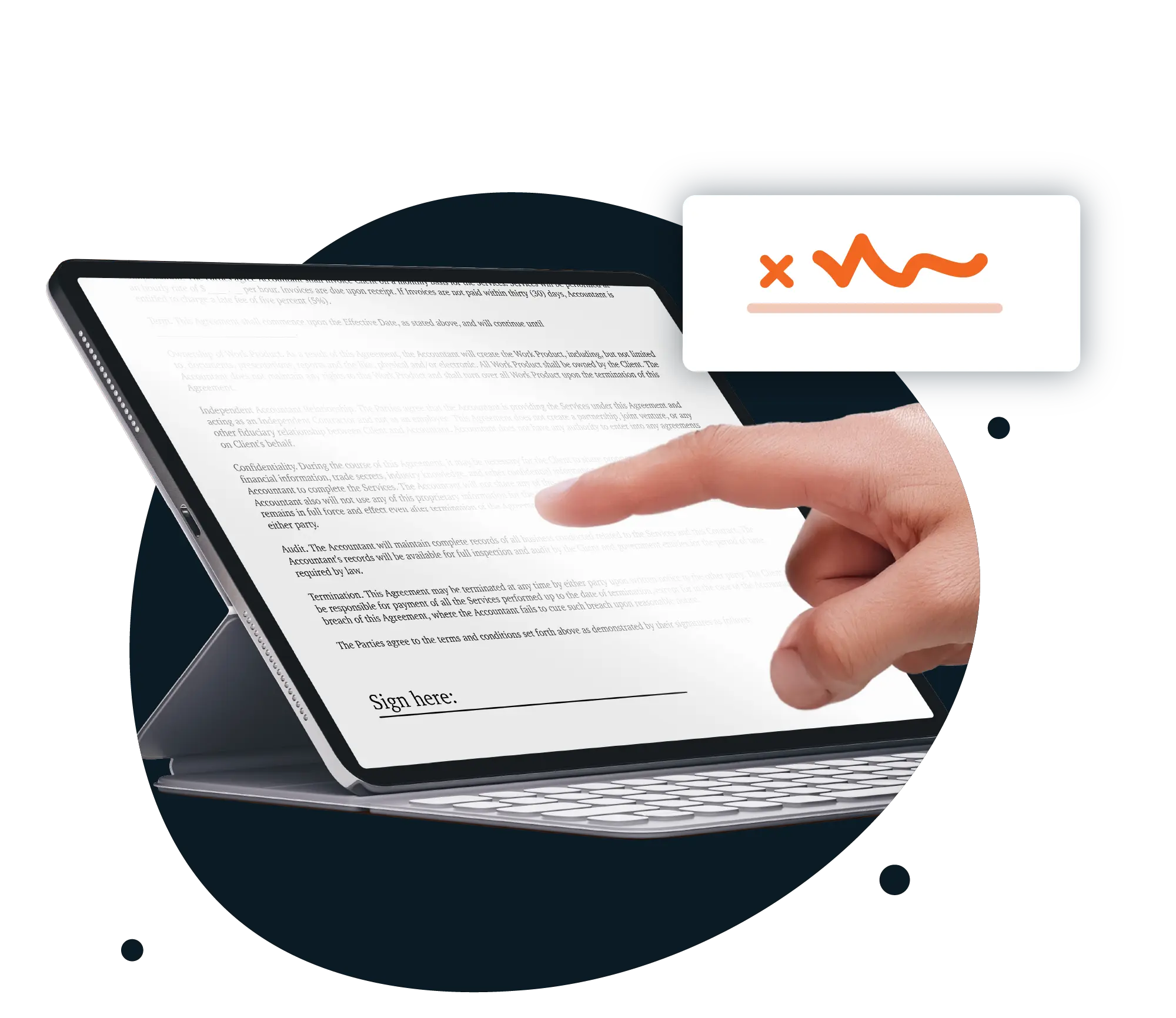Electronic Signature Software for Accounting Professionals
Mango gives accounting firms e-Signature software built for real-world workflows. Collect legally binding signatures quickly, securely, and with complete visibility.

With MangoShare, requesting client signatures is quick and simple
Eliminate the print, sign, scan, repeat cycle. Request and collect client signatures in minutes without leaving your practice management system.
With Mango’s integrated e-Signature capabilities, you can send documents for signature, verify signer identity, and automatically store completed agreements—all in one place.

What is an Electronic Signature or eSignature?
The Electronic Signature & Records Association (“ESRA”) defines an electronic signature as:
“an electronic sound, symbol or process that is attached to or logically associated with a record and executed or adopted by a person with the intent to sign the record.”
In practical terms, an electronic signature is a secure digital equivalent of a handwritten signature. It verifies the signer’s identity and intent to sign the document — and when done legally, it is just as binding as a paper signature.
Why should I use an online electronic signature tool?
Requesting signatures used to mean printing, scanning, emailing, or chasing clients down. That process slows you down, increases back-and-forth, and invites errors. Mango eliminates all of that. You can:
- Send signature requests instantly to clients anywhere
- Verify signer identity with Knowledge-Based Authentication
- Capture legally binding signatures compliant with UETA and ESIGN
- Store signed documents securely in the client’s file for easy reference
- Track status and follow up automatically


Key benefits for your firm
Speed Up Your Workflow: No more interrupting your work to chase signatures or send multiple emails; requests go out instantly.
Stay Compliant & Secure: Mango supports legally recognized e-Sign standards and captures the audit data necessary to validate every signature.
Reduce Client Friction: Clients can sign from any device, anytime — without printing, scanning, or special software.
Centralize Your Work: Signed documents are automatically saved where you manage the engagement, eliminating silos and manual filing.
Eliminate Errors & Delays: Know exactly when a signature is complete, and eliminate back-and-forth emails asking, “Did you get that?” or “Have you signed yet?”
The Tools Your Clients Will Like and Use Run on Mango
Innovative file sharing and eSignatures management tools built for you and your clients
eSignatures FAQs
Still wondering how Mango can help you collect signatures with no hassle? We’ve got solutions that will take you far beyond industry-agnostic tools for collecting signatures in documents like Microsoft Word and Google Docs and keep your data secure.